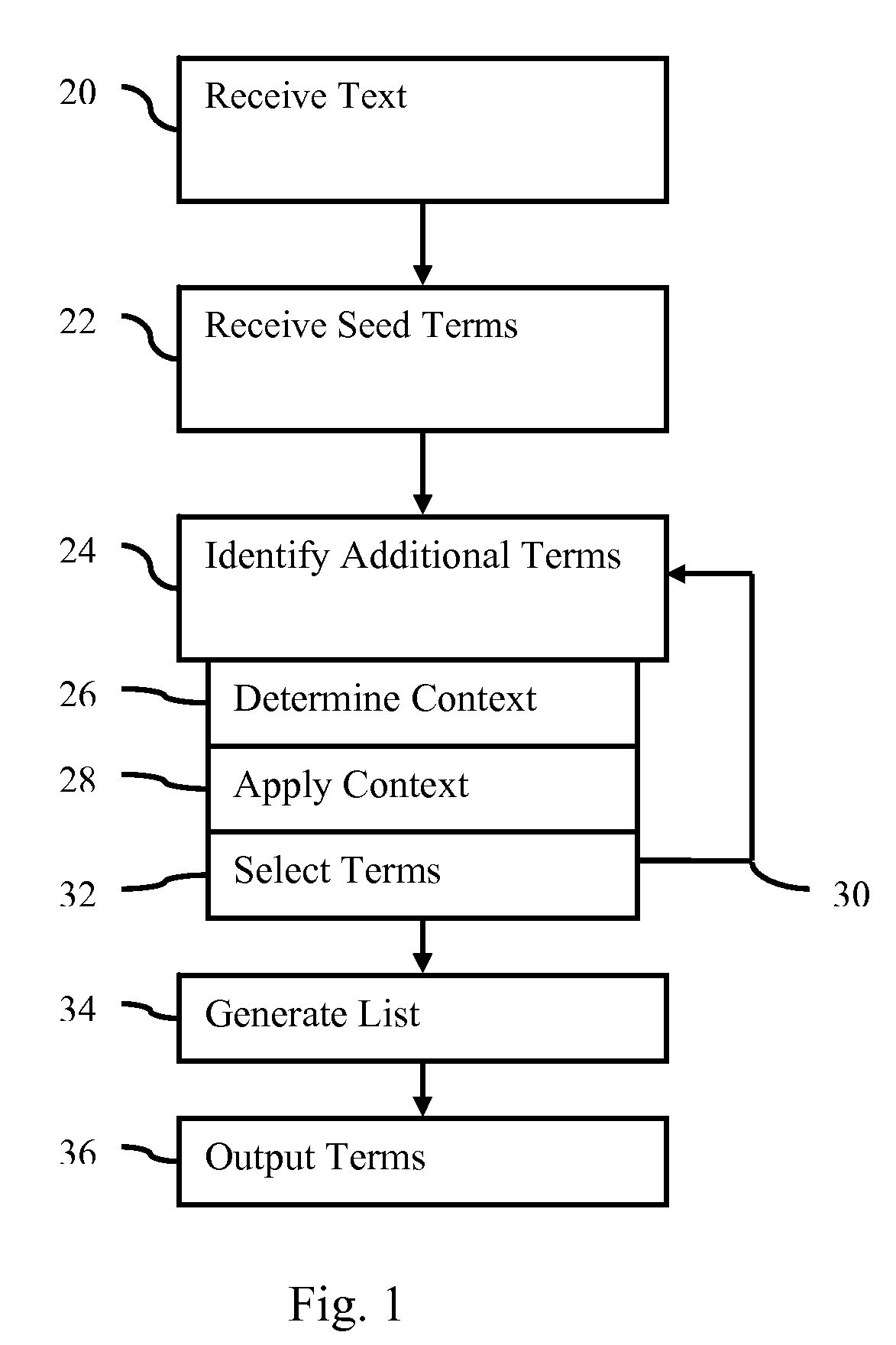Medical Entity Extraction From Patient Data
a technology of medical entities and patient data, applied in the field of determining terms associated with a medical canonical entity, can solve the problems of difficult automated analysis of medical records, under-utilized sources of unstructured data, and difficult automated analysis
- Summary
- Abstract
- Description
- Claims
- Application Information
AI Technical Summary
Benefits of technology
Problems solved by technology
Method used
Image
Examples
Embodiment Construction
[0023]Complex and non-complex entities and their reformulations (e.g., paraphrases) are extracted from free text. Different critical information is captured for different entity classes. The automatic, data-driven methods are capable of extracting complex concepts of the medical canonical entities. Through the process of acquiring entity occurrences (instances) from free text, entity taggers have access to the more complex training data for building better models.
[0024]To extract members of a canonical entity, semi-supervised methods identify complex medical entities (medication, diseases, symptoms, or others) which include relevant modifiers, compound structures, and paraphrases. The entities are identified from electronic patient records, along with building an extended medical class lexicon. The approaches have high precision, but still cover a large set of the entity instances present in medical corpora.
[0025]The semi-supervised approach extracts extended entities from free medi...
PUM
 Login to View More
Login to View More Abstract
Description
Claims
Application Information
 Login to View More
Login to View More - R&D
- Intellectual Property
- Life Sciences
- Materials
- Tech Scout
- Unparalleled Data Quality
- Higher Quality Content
- 60% Fewer Hallucinations
Browse by: Latest US Patents, China's latest patents, Technical Efficacy Thesaurus, Application Domain, Technology Topic, Popular Technical Reports.
© 2025 PatSnap. All rights reserved.Legal|Privacy policy|Modern Slavery Act Transparency Statement|Sitemap|About US| Contact US: help@patsnap.com



